
Salt and Sanctuary Review
Salt and Sanctuary wants so badly to be a Dark Souls game that comparisons become unavoidable. This isn’t a simple case of one or two elements being similar: it’s a sequel in every way but the title. Until recently, there were only a few titles that would be labelled as Souls clones: Lords of the Fallen, Team Ninja’s upcoming Nioh, Dark Souls II… and none of them look to be as close as this.
The challenge doesn’t come from the number of enemies on screen, but from the intricacy of each individual; no matter how many bosses you’ve slain, a simple undead can be a significant threat if you leave yourself open. This is something that Salt and Sanctuary nails.
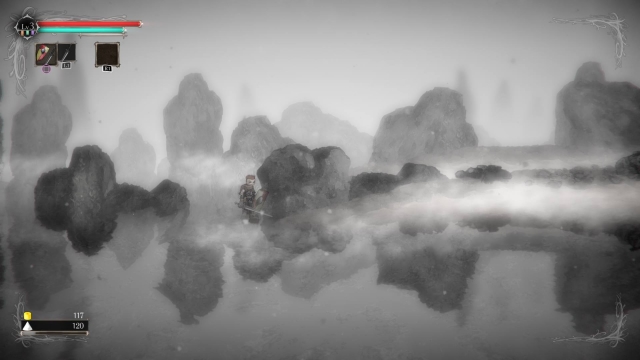
These soldiers aren’t here to be swatted away on your path to the next boss; no, it is always a battle of attrition to make it from one sanctuary to the next. Waking on a beach following the opening shipwreck is the closest this game has to a peaceful moment, for as soon as you begin to climb the hill before you, the dread kicks in.
That dread is the thing that is missing in most Souls clones. It’s reaching a doorway and weighing up whether I have enough health, and enough healing items, to face whatever may be waiting on the other side. It’s seeing two paths before me and having a genuine fear that I’m about to go the wrong way and end up losing all of my accumulated Salt to a monster way beyond my ability.
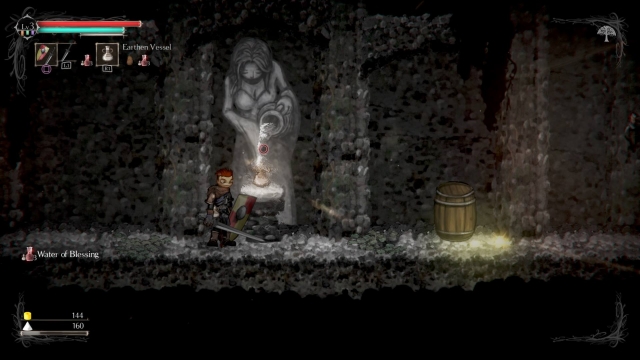
Sometimes it’s easy to tell which way to go; one way leads to an area similar to the one I’m currently standing in, and the other into somewhere entirely new: maybe a dark forest, an underground cave system, or an almost too literal ghost town. The world is a series of paths that link and loop like a web, often with the matching feeling of being trapped. The best moments come when you fight your way to a barred door, only to push it open to find yourself back where you started an hour ago, having opened a shortcut rather than made any actual progress.
As has been the case in games for generations, your path is often blocked by a boss. Salt and Sanctuary’s boss fights hold a familiar gravitas, undeterred by the limitations of the 2D presentation. Despite the lack of space to maneuver, you will still find yourself dodge rolling laterally through attacks and bodies just like you would in a 3D arena.
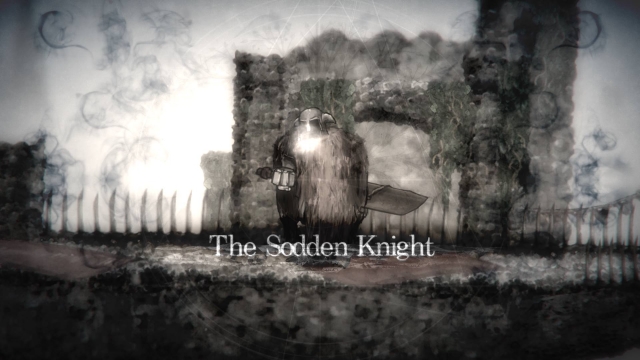
The translation to a single plane was jarring at first, as I have become so used to sidestepping thrusts and keeping close in combat. Here, there’s far more of an emphasis on correct spacing, similar to a fighting game like Street Fighter, tasking you with swiftly repositioning into and out of attacking range to avoid and return damage. This combat system will give a familiar feeling to anyone who played either of Ska Studios’ The Dishwasher games, with aerial slice and dicing and bloody executions returning.
The 2D does lead to one issue; certain fights become far more hectic than need be, and become an annoyance rather than a challenge. In particular, a boss high amongst the trees throws down patches of dark cloud that toss scythes that quickly fill the screen. Along with all the other attacks being thrown at you simultaneously, it can verge on cruel due to the restricted movement options.
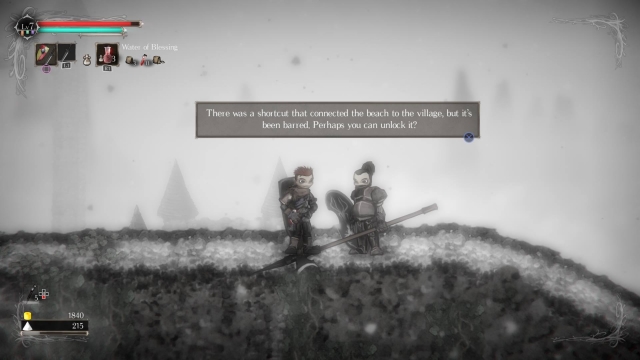
One feature for which the 2D does work, however, appears after you receive a branding from a mad jester; the black stone pillars seen throughout the world can now be interacted with. By some magic, your direction of gravity shifts, pulling you up to the ceiling, and opens new paths. Moving past a smaller appliance similar to the pillar will return your gravity to normal, with some placed in such a way to create momentum-based puzzles - for instance, dropping off the ceiling towards the sky, passing one of these, and using the momentum shift to propel myself over a large obstacle.
There are other features ripped straight from Souls and Bloodborne: leaving messages on the ground to offer words of encouragement for or to deceive other players (“Jump here. Treasure below.”); gravestones mark where others have fallen, which display their final moments when destroyed; and enemies absorbing your Salt upon killing you, having you defeat them to reclaim it.
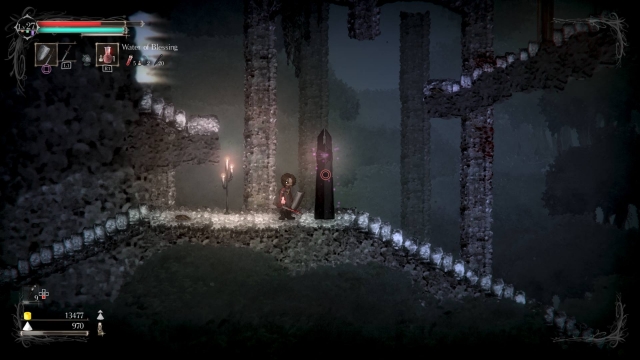
A frankly unnecessary addition to death is a monetary cost. On taking a killing blow, your body will be dragged back to your most recent sanctuary by a cleric, and the bastard will take a percentage of your cash as payment. Payment you seemingly can’t get back! When death can come at an instant, through traps or simply falling from a platform, being punished twice feels harsh - at least you can recover 100% of your Salt from where you died.
In my little world, it is a fact that few studios make better games than From Software, but Ska Studios have made the best attempt yet to emulate them. While the structure underlying Salt and Sanctuary isn’t quite original, it serves to prove that this is a winning formula for combining mechanical and aesthetic design - feeding into one another and making each stronger.
It’s a better Souls sequel than Dark Souls II.
Salt and Sanctuary (Reviewed on PlayStation 4)
This game is good, with a few negatives.
A 2D action adventure inspired by Dark Souls. While the structure underlying Salt and Sanctuary isn’t quite original, it serves to prove that this is a winning formula for combining mechanical and aesthetic design - feeding into one another and making each stronger.


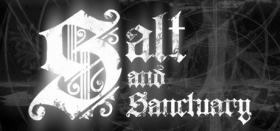







COMMENTS